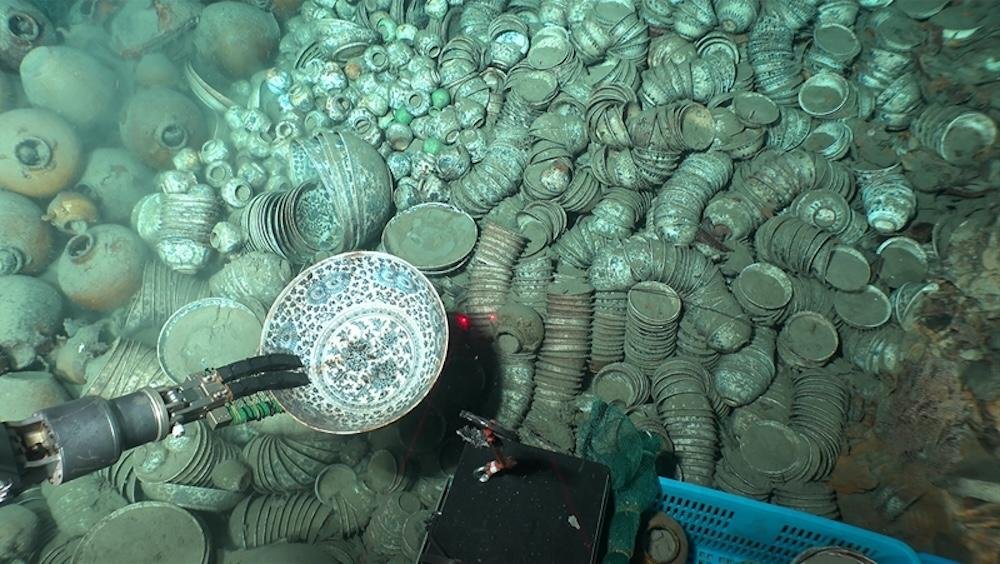Underwater archaeologists have unearthed a treasure trove of over 900 artifacts from two Ming Dynasty shipwrecks in the South China Sea. The shipwrecks, discovered in October 2022 at a depth of approximately 4,900 feet (1,500 meters), lie less than a mile off the coast of Sanya, a city on China’s Hainan Island, and about 14 miles apart from each other.
 Archaeologists used manned and unmanned submersibles to recover over 900 artifacts from the wrecks. Credit: National Cultural Heritage Administration
Archaeologists used manned and unmanned submersibles to recover over 900 artifacts from the wrecks. Credit: National Cultural Heritage Administration
The Ming Dynasty, which spanned from 1368 to 1644, was an era marked by cultural renaissance and international trade. These shipwrecks likely operated during different periods of the dynasty.
In 2023, researchers embarked on a meticulous excavation process, utilizing advanced deep-sea submersibles, including the manned submersible “Shenhai Yongshi” or “Deep Sea Warrior.” This project, a collaboration between the National Center for Archaeology, the Chinese Academy of Science, and a museum in Hainan, involved mapping the wreck sites, collecting artifacts, and gathering sediment samples.
Yan Yalin, director of the archaeology department for China’s National Cultural Heritage Administration (NCHA), noted, “The wrecks are both relatively well-preserved, and a large number of relics have been uncovered.” The artifacts retrieved from the first shipwreck included copper coins, pottery, and porcelain, primarily from Jingdezhen, China’s renowned porcelain capital. This site alone yielded 890 objects, a mere fraction of the more than 10,000 items estimated to be scattered around the wreckage.
The second ship, although less bountiful, contained 38 significant items, such as lumber, porcelain, pottery, spiral-shaped turban shells, and deer antlers. Some of the artifacts from both wrecks are believed to date back to the Zhengde period (1505-1521) and even earlier, to the reign of Emperor Hongzhi (1487-1505).
“The discovery provides evidence that Chinese ancestors developed, utilized, and traveled to and from the South China Sea, with the two shipwrecks serving as important witnesses to trade and cultural exchanges along the ancient Maritime Silk Road,” Guan Qiang, deputy head of the NCHA, said in a statement. This route was crucial in fostering international trade and cultural exchanges during the Ming Dynasty, with China exporting goods like porcelain and silk while importing new foods such as peanuts and sweet potatoes.
The excavation process was not just about retrieving artifacts but also involved documenting the wreck sites with high-definition underwater cameras and a 3D laser scanner. This comprehensive approach aims to preserve the context and details of the shipwrecks, providing invaluable data for further research.
The artifacts, now recovered and studied reveal the sophistication of Ming Dynasty craftsmanship and the extensive trade networks of the era. As the Smithsonian’s National Museum of Asian Art describes, Ming porcelain, particularly its blue and white variants, was highly coveted worldwide. This era’s artistic excellence also extended to vast landscapes, religious themes, and detailed bird-and-flower motifs, reflecting the dynasty’s cultural and artistic achievements.
The recent discoveries in the South China Sea are not limited to these ancient shipwrecks. Just last month, officials announced the finding of a World War II-era American Navy submarine off the Philippine island of Luzon, further highlighting the region’s historical and strategic importance.





